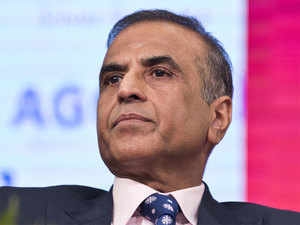

The first Union Budget of the 2020s underlines GoI’s intent towards building a strong foundation for achieving the goal of making India a $5 trillion economy. More importantly, finance minister Nirmala Sitharaman has made emerging global technology trends, along with inclusive growth, as the backdrop for the budget.
It was heartening to hear quantum computing, machine learning (ML) and artificial intelligence (AI) find a mention in the budget, as digital technologies become the primary platform for economic activity and growth. And that’s where Prime Minister Narendra Modi’s ‘Digital India’ initiative can play a key role. The initiative around incentives for building data centre parks and taking high-speed broadband deeper into rural India are welcome steps.
The FM’s strong focus on ‘soft infrastructure’ elements such as education, and the skilling of youth, healthcare and sanitation, and the welfare of women is welcomed. This will ensure that every Indian, specifically the young, gets access to the fruits of economic growth. Also noteworthy was the progress made in the enrolment of girls in schools as a result of GoI’s ‘Beti bachao, beti padhao’ (‘Protect daughters, teach daughters’) campaign that Sitharaman mentioned in her speech.
GoI’s focus on solar power and clean energy is a very welcome move, given growing global concerns over climate change. Incentivising farmers to set up solar panels for irrigation, and even on barren land to sell the surplus power to grids, will help scale up adoption of clean energy, while offering these farmers additional income. The government should lay out a clear roadmap for sustainable agriculture practices to balance the need for growing food production with limited natural resources.
While there was an expectation that Sitharaman would announce some stimulus measures for growth in her second budget, one has to appreciate the limited room available to her given the domestic and global headwinds to growth. It is, therefore, understandable that in order to stimulate demand, she has chosen to put more money in the hands of the middle classes, with the option of the new personal income-tax structure.
The government had already lowered the tax rates for businesses, and the abolition of the dividend distribution tax (DDT) is yet another industry-friendly move. The intent to further simplify the tax system, intent to bring down litigation, will add to ease of doing business. The plan to set up a single-window investment clearance cell, as well as a more open bond market, should boost investor sentiment.
Finally, GoI didn’t abandon its path of fiscal prudence while making short-term relaxations in the interest of growth. With the clearing up of nonperforming assets (NPAs) in the banking system, and the government’s push for better governance across the financial system, credit availability should pick up.
But the biggest takeaway from the budget was the call-out from Sitharaman that ‘wealth creators will be respected’. This will be a great boost to business confidence and entrepreneurship, and a sign that this government is serious about building a ‘New India’, where India Inc and new-age entrepreneurs will be stakeholders in this growth.
[“source=economictimes”]



